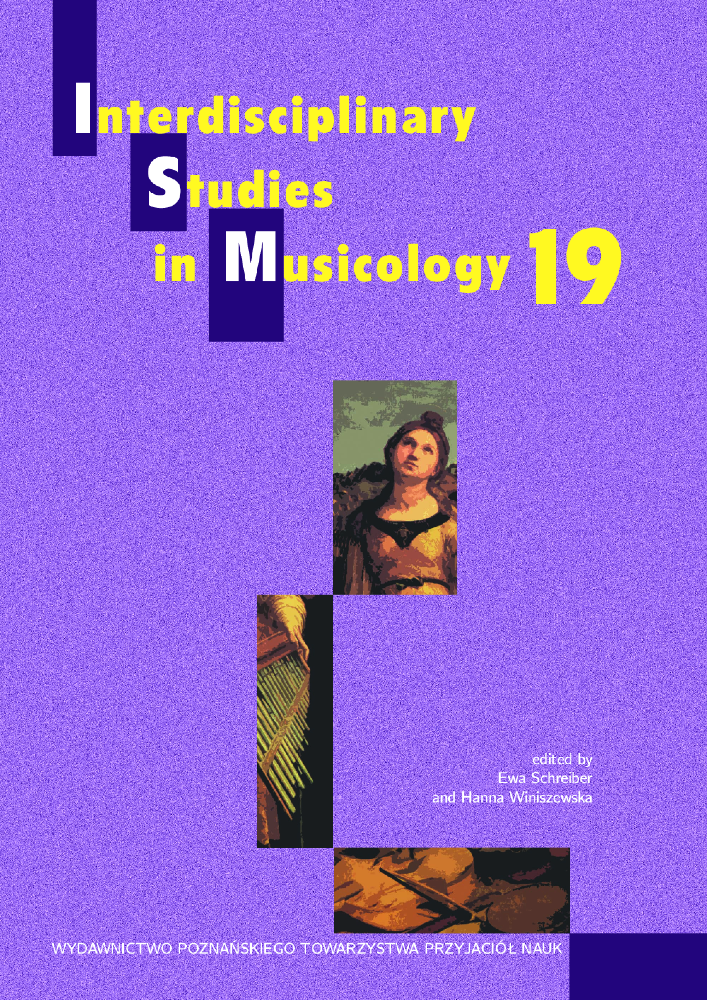Abstrakt
Erik Satie (1866–1925) was a colourful and intriguing artist in the world of Parisian avant-garde. In the turbulent times of the early 20th century he created the concept of musique d’ameublement (‘furniture music’) – a vision of music that did not require attentive listening because it was supposed to play an extravagant role (as it was perceived in that period) of an acoustic background accompanying all everyday events. A change in recording and sound reproduction techniques in the 20th century that led to the ubiquity of music in the contemporary world seems to confirm that Satie’s ‘furniture music’ can be treated as a prophetic idea. However, the problem of how the concept of musique d’ameublement should be interpreted still remains ambiguous. The main aim of the present paper is to discuss the two contrary ways of the interpretation of ‘furniture music’. The first approach assumes that Satie can be treated as ‘the progenitor’ of muzak – a musical genre initially associated with the activities of Muzak company and then gradually identified with any background music provided on a mass scale to the public space. The second approach is an attempt to interpret the concept of musique d’ameublement in a completely different way – as an expression of opposition to an increasingly mechanized Western world dominated by progress and technology, where the role of music boils down only to the function of the acoustic background. Therefore, Satie becomes one of the precursors of the actions taken by the opponents of muzak (e. g. pipedown movements), who seek to eliminate the imposed background music from the public space. The reconstruction of musique d’ameublement (basing, inter alia, on selected source materials) is treated as a starting point for the discussion that leads to the acoustic ecology perspective.
Finansowanie
Research Grant No. 2016/23/D/HS2/01773 from the National Science Centre (Poland)
Bibliografia
Davis, M. E. (2007). Erik Satie. London: Reaktion.
Gołąb, M. (2011). Muzyczna moderna w XX wieku: między kontynuacją, nowością a zmianą fonosytemu [Musical Modernity in the Twentieth Century: Between Continuation, Innovation and Change of Phonosystem]. Wrocław: Wydawnictwo Uniwersytetu Wrocławskiego. English edition: Gołąb, M. (2015). Musical Modernism in the Twentieth Century: Between Continuation, Innovation and Change of Phonosystem, transl. by W. Bońkowski. Frankfurt am Main, Berlin, Bern, Bruxelles, New York, Oxford, Wien: Peter Lang Academic Publishers.
Jarzębska, A. (2004). Spór o piękno muzyki. Wprowadzenie do kultury muzycznej XX wieku [The dispute about the beauty of music. Introduction to 20th-century music culture]. Wrocław: Wydawnictwo Uniwersytetu Wrocławskiego.
Kahn, D. (2001). Noise, Water, Meat: A History of Sound in the Arts. Cambridge, MA: MIT Press.
Lanza, J. (2004). Elevator Music: A Surreal History of Muzak, Easy-Listening, and Other Moodsong; Revised and Expanded Edition. University of Michigan Press.
Makomaska, S. (2015a). Droga do ‘makdonaldyzacji’ doświadczenia słuchowego – refleksja nad obecnością muzyki tła w przestrzeni komercyjnej [The way to ‘McDonaldization’ of the auditory experience – reflection on the presence of background music in commercial space]. In J. Kaleńska-Rodzaj & R. Lawendowski (Eds.). Psychologia muzyki: pomiędzy wykonawcą a odbiorcą [Psychology of music: between performer and receiver] (151–162). Gdańsk: Harmonia Universalis.
Makomaska, S. (2015b). ‘No wallpaper music’ movement in Poland – the debate on the presence of background music in the public space. Proceedings of the International Multidisciplinary Scientific Conference on Social Sciences and Arts SGEM 2015. Book 3 (Anthropology, Archaeology, History and Philosophy), 3–10.
Makomaska, S. (2016). ‘McDonaldization’ and the concept of ‘musicscape’. What do they have in common? Proceedings of the 3rd International Multidisciplinary Scientific Conference on Social Sciences & Arts SGEM 2016. Book 4 (Arts, Performing Arts, Architecture and Design), 1, 235–242.
Makomaska, S. (2017). ‘Acoustic wallpaper’ as a tool of ‘scientific management’. The echoes of (neo-) Taylorism in public space design. A & P (Art Communication & Popculture), 3/2, 63–78.
Makomaska, S. (2018). How to ‘furnish’ the public space with (artistic) background music… Erik Satie and Brian Eno. Proceedings of the 5th International Multidisciplinary Scientific Conference on Social Sciences & Arts SGEM 2018, 5, 487–494.
Makomaska, S. (in press). Efekt ‘tapety akustycznej’ – ekstrawagancja czy strategia? Musique d’ameublement i audiomarketing [The effect of ‘acoustic wallpaper’ – extravagance or strategy? Musique d’ameublement and audiomarketing]. In J. Kaleńska-Rodzaj, M. Chełkowska-Zacharewicz (Eds.). Psychologia muzyki [Psychology of Music].
Myers, R. (1948). Erik Satie. London: Dennis Dobson.
Orledge, R. (1992). Satie the Composer. New York/ Oakleigh: Cambridge University Press. Pipedown. The campaign for freedom from piped music. Retrieved from https://pipedown.org.uk/
Potter, C. (Ed.). (2013). Erik Satie: Music, Art and Literature. London: Routledge.
Potter, C. (2015). Erik Satie’s musique d’ameublement and Max Jacob’s Ruffian toujours, truand jamais. Revue de musicologie, 101 (2), 345–366.
Potter, C. (2016). Erik Satie. A Parisian Composer and His World. Woodbridge: The Boydell Press.
Richter, H. (1986). Dadaizm: sztuka i antysztuka [Dadaism: Art and Anti-art]. (J. S. Buras, Trans.). Warszawa: Wydawnictwa Artystyczne i Filmowe.
Schafer, R. M. (1977). The tuning of the world: Toward a theory of soundscape design. Toronto: McClelland and Stewart Limited; New York: Alfred A. Knopf, Inc.
Shattuck, R. (1969). The Banquet Years. London: Jonathan Cape.
Skowron, Z. (1995). Nowa muzyka amerykańska [New American Music]. Kraków: Musica Iagellonica.
Słownik Sztuki [Art Dictionary] (2008). Kraków: Krakowskie Wydawnictwo Naukowe.
Tempelier, P. D. (1932). Erik Satie. Paris: Editions Rieder.
Volta, O. (Ed.). (1979). Satie Écrits. Paris: Champ-Libre.
Volta, O. (1996a). Introduction to A Mammal’s Notebook. Collected Writings of Erik Satie. London: Atlas Press.
Volta, O. (Ed.). (1996b). A Mammal’s Notebook. Collected Writings of Erik Satie. London: Atlas Press.
Volta, O. (1998a). Preface to score Erik Satie: Musiques d’ameublement pour petit ensemble. Paris: Salabert, EAS 1714IX.
Volta, O. (Ed.). (1998b). Erik Satie: Musiques d’ameublement pour petit ensemble. Paris: Salabert, EAS 1714IX.
Volta, O. (Ed.). (2003). Erik Satie: Correspondence presque complete. Paris: Fayard/ IMEC.
Whiting, S. M. (1999). Satie the Bohemian. From Cabaret to Concert Hall. Oxford: Clarendon Press

